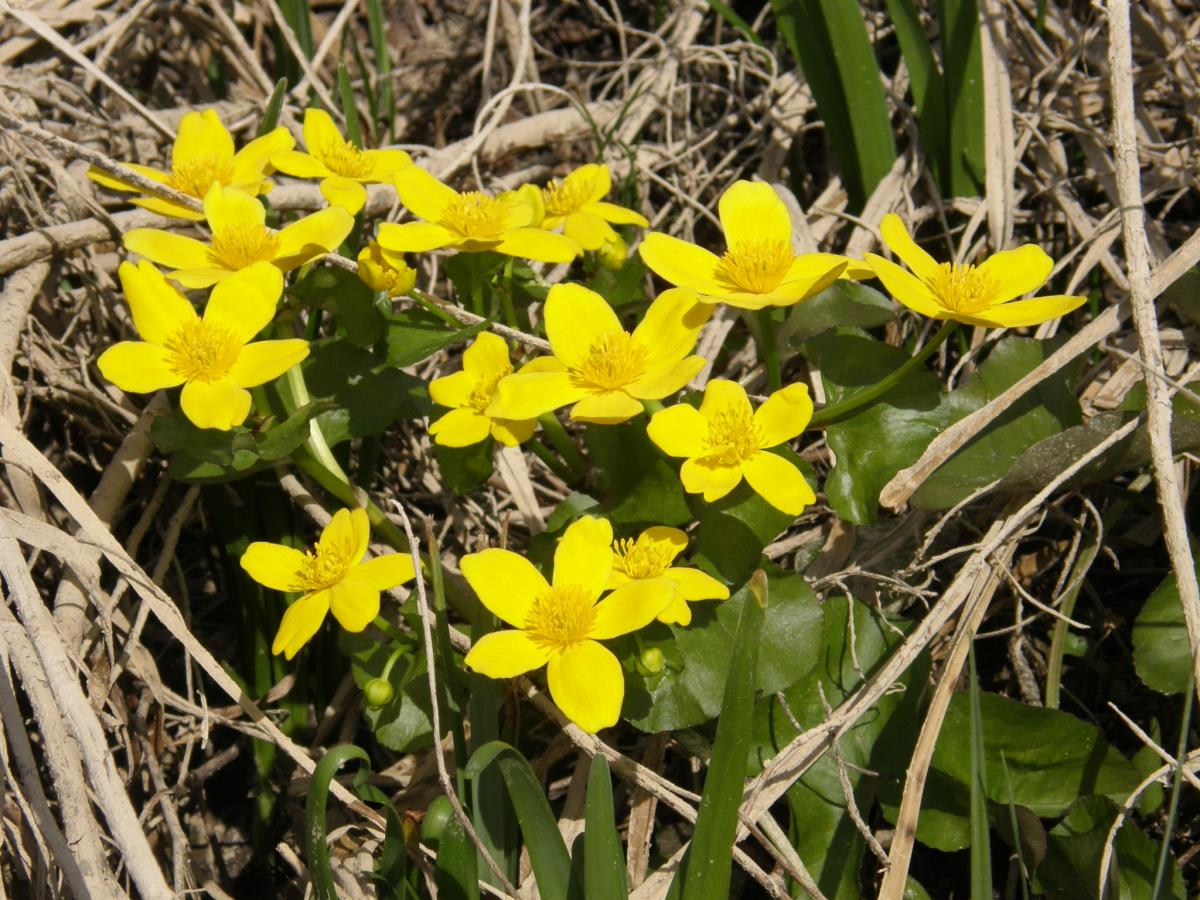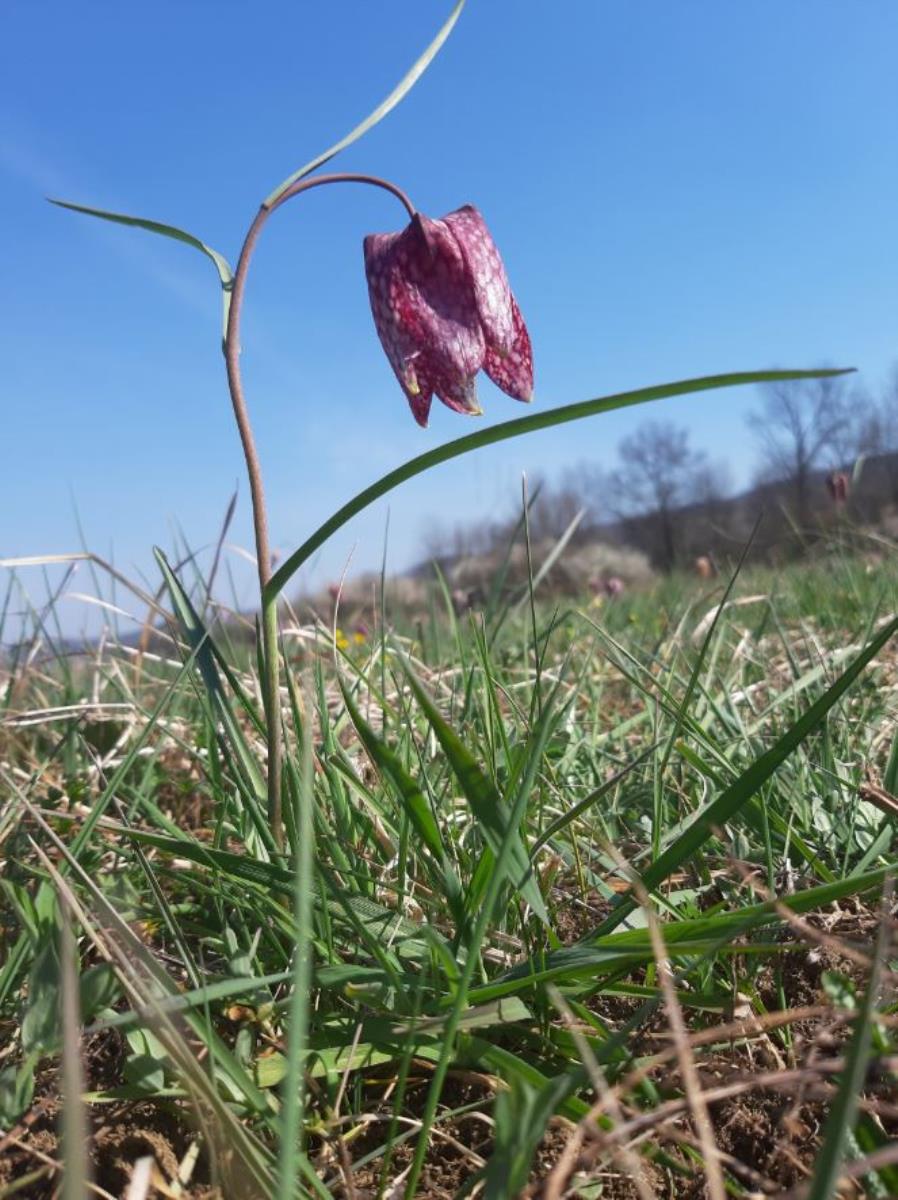JELAS POLJE SIGNIFICANT LANDSCAPE
Official name: Jelas polje
Category of protection: significant landscape
Year of protection: 1995
Location
Jelas polje covers an extremely large area of over 20,000 ha, stretching from the Sava River in the south to the A3 motorway from Lužani to Slavonski Brod in the north.
History
Jelas polje used to be a large wetland area with contributions from the Sava River and its tributaries. With the construction of embankments and canals, most of the area was drained. Fortunately, during the last century, in the 60's and 70's, an area of about 25 km2 (2500 ha) was turned into fishponds with extensive fish farming. The fishponds with their ornithofauna represent the heart and the greatest value of the Jelas polje. The remaining areas are a mosaic of floodplain forests, pastures, meadows, arable land and rural settlements. The area was protected as significant landscape in 1995. Since Croatian accession to the EU, it is part of the European ecological network Natura 2000. The wider area of the pond is protected as a conservation area important for species and habitat types Jelas polje s ribnjacima (HR2001326) and a conservation area important for birds Jelas polje (HR1000005).
Tourism
There are no organized visits to the ponds or Jelas polje. The ponds are supervised by a concessionaire.
Natural values
Jelas polje is part of the European ecological network Natura 2000. The wider area of the pond is protected as a conservation area important for species and habitat types Jelas polje s ribnjacima (HR2001326) and a conservation area important for birds Jelas polje (HR1000005). The target habitat of the area Jelas polje s ribnjacima is 3130 Oligotrophic to mesotrophic standing waters with vegetation of the Littorelletea uniflorae and/or of the Isoeto-Nanojuncetea. Target species are the European fire-bellied toad (Bombina bombina), the large white-faced darter (Leucorrhinia pectoralis), the western barbastelle (Barbastella barbastellus), the Eurasian otter (Lutra lutra) and the European pond turtle (Emys orbicularis).
The greatest values of the area are birds, both migratory and nesting. Of particular interest is the mixed nesting colony of herons and Eurasian spoonbills (Platalea leucorodia).
Graylag goose (Anser anser) and a large number of different species of ducks (ferruginous duck (Aythya nyroca), red-crested pochard (Netta rufina), gadwall (Anas strepera), mallard (Anas platyrhynchos)), glossy ibis (Plegadis falcinellus), black-headed gull (Chroicocephalus ridibundus), great crested grebe (Podiceps cristatus), black-necked grebe (Podiceps nigricollis), bearded reedling (Panurus biarmicus) and many other species nest on fishponds. Almost 7000 common cranes (Grus grus) and more than 5000 geese, most of which the greater white-fronted goose (Anser albifrons) find shelter here in winter and during migrations. Wintering and/or migratory birds that can be found around fishponds are also northern pintail (Anas acuta), northern shoveler (Anas clypeata), Eurasian teal (Anas crecca), Eurasian wigeon (Anas penelope), garganey (Anas querquedula), gadwall (Anas strepera), common pochard (Aythya ferina), tufted duck (Aythya fuligula), common goldeneye (Bucephala clangula), Eurasian curlew (Numenius arquata) and mute swan (Cygnus olor).
The nesting birds of the Jelas polje are the white-tailed eagle (Haliaeetus albicilla), the white (Ciconia ciconia) and black (Ciconia nigra) stork, the European honey buzzard (Pernis apivorus), the western marsh harrier (Circus aeruginosus) and the northern lapwing (Vanellus vanellus). Here, we can also find colonies of European bee-eaters (Merops apiaster), the sand martin (Riparia riparia) and the grey heron (Ardea cinerea).
The greatest values of the area are birds, both migratory and nesting. Of particular interest is the mixed nesting colony of herons and Eurasian spoonbills (Platalea leucorodia).
Graylag goose (Anser anser) and a large number of different species of ducks (ferruginous duck (Aythya nyroca), red-crested pochard (Netta rufina), gadwall (Anas strepera), mallard (Anas platyrhynchos)), glossy ibis (Plegadis falcinellus), black-headed gull (Chroicocephalus ridibundus), great crested grebe (Podiceps cristatus), black-necked grebe (Podiceps nigricollis), bearded reedling (Panurus biarmicus) and many other species nest on fishponds. Almost 7000 common cranes (Grus grus) and more than 5000 geese, most of which the greater white-fronted goose (Anser albifrons) find shelter here in winter and during migrations. Wintering and/or migratory birds that can be found around fishponds are also northern pintail (Anas acuta), northern shoveler (Anas clypeata), Eurasian teal (Anas crecca), Eurasian wigeon (Anas penelope), garganey (Anas querquedula), gadwall (Anas strepera), common pochard (Aythya ferina), tufted duck (Aythya fuligula), common goldeneye (Bucephala clangula), Eurasian curlew (Numenius arquata) and mute swan (Cygnus olor).
The nesting birds of the Jelas polje are the white-tailed eagle (Haliaeetus albicilla), the white (Ciconia ciconia) and black (Ciconia nigra) stork, the European honey buzzard (Pernis apivorus), the western marsh harrier (Circus aeruginosus) and the northern lapwing (Vanellus vanellus). Here, we can also find colonies of European bee-eaters (Merops apiaster), the sand martin (Riparia riparia) and the grey heron (Ardea cinerea).
Sights
The cultural heritage of Jelas polje is primarily related to sacral buildings, such as: the church of the Assumption of the Blessed Virgin Mary in Slavonski Kobaš (gothic), the Church of St. John the Baptist in Slavonski Kobaš (baroque), the church of St. Mary Magdalene in Bebrina (baroque), the church of St. Michael the Archangel in Dubočac (baroque). On the eastern border of the Jelas polje is the town of Slavonski Brod and its most important sights: the Baroque fortress and the Baroque church of the Holy Trinity with a Franciscan monastery.
Known about the unknown
Thanks to food provided by fishponds, the Sava River with its tributaries, fields and wet grasslands, Jelas polje attracts a significant number of nesting pairs of white storks (Ciconia ciconia). The village with the greatest number of white stork nests in Jelas polje is the village of Slavonski Kobaš, with 10 active nests in 2019. Outside the area of Jelas polje, the biggest numbers of white stork nests are in villages of Orubica, Davor and Gornji Varoš (all in Brod-Posavina County).
The area is open for visitors:
- Working hours (for visitors): There are no organized visits to the ponds. Exceptionally, the visit of expert groups is possible with prior agreement with the Public Institution and the concessionaire.
- Prior notice: The visit must be announced on the telephone numbers 035 409 043 or 035 409 042 or email zastita.prirode@bpz.hr or on the link: http://www.natura-slavonica.hr/hr/zasticena-podrucja1/najava-grupnog-posjeta.html
The area is managed by Public institution for management of protected parts of nature of Brod-Posavina County
- Address: Petra Krešimira IV. br. 1, 35000 Slavonski Brod, Hrvatska
- Telephone number: +385 35 409 043 ili +385 35 409 042
- Official website: www.natura-slavonica.hr









